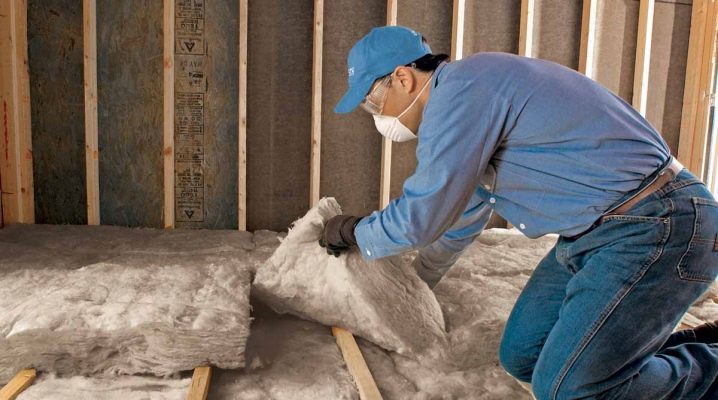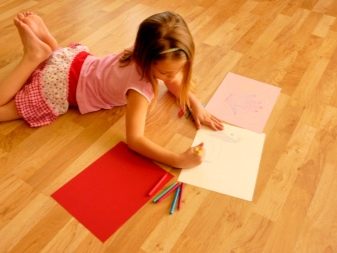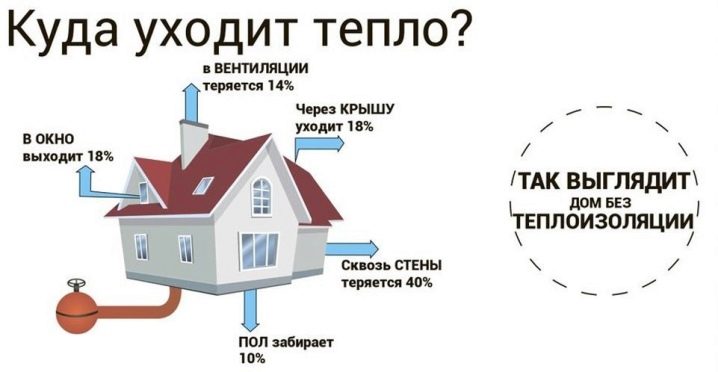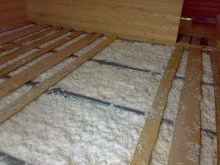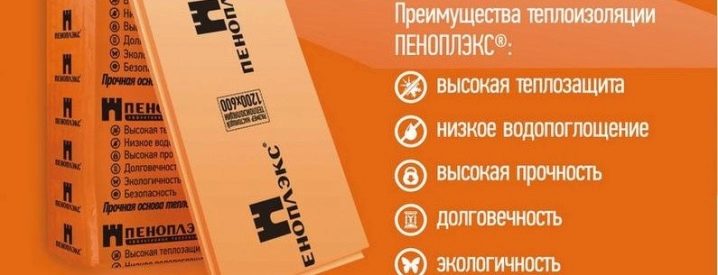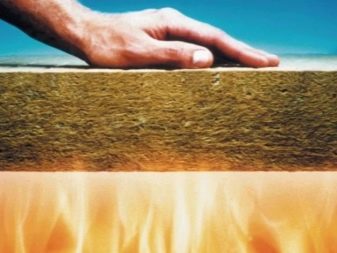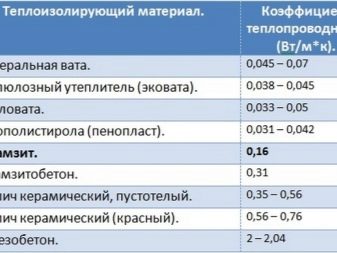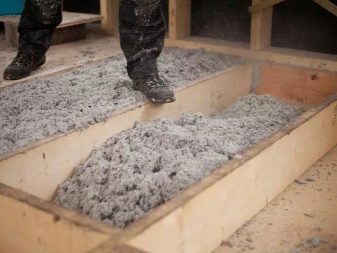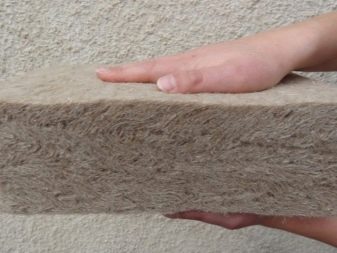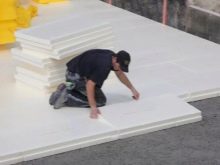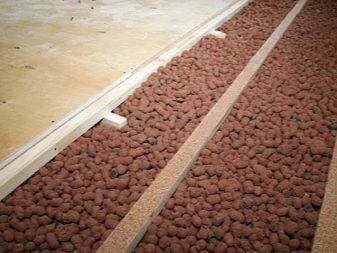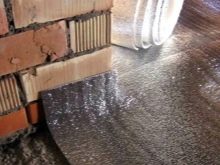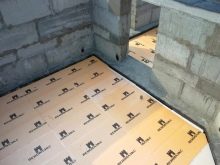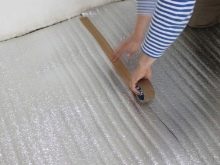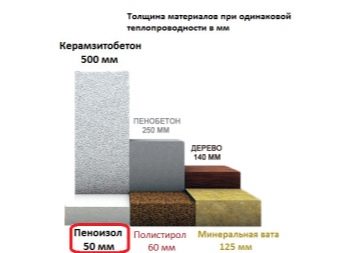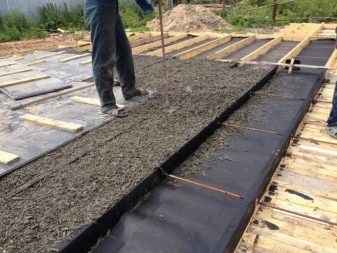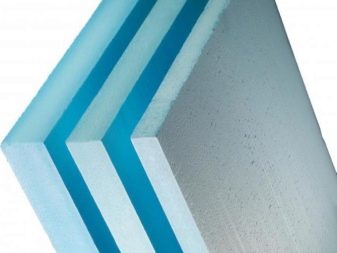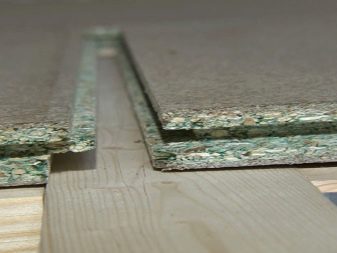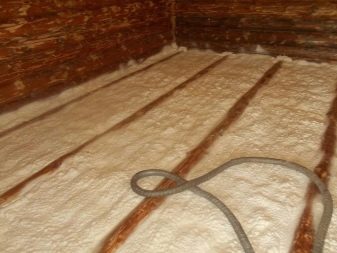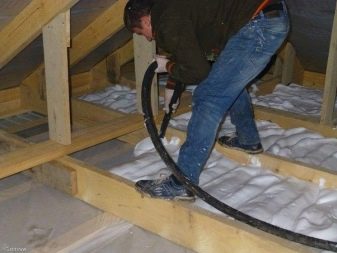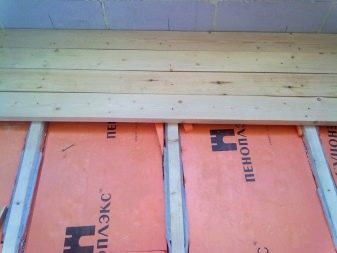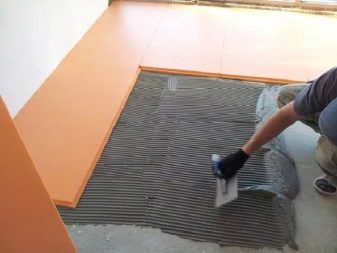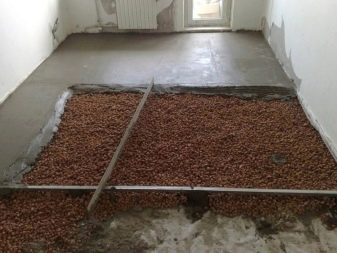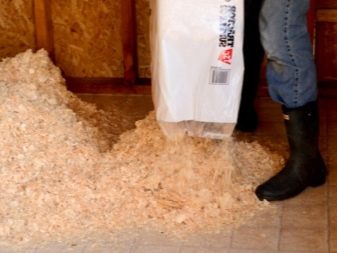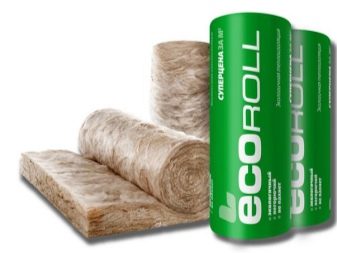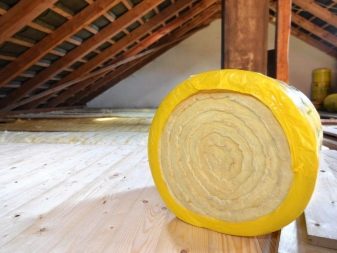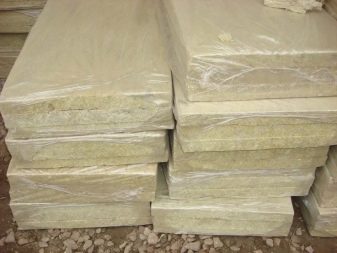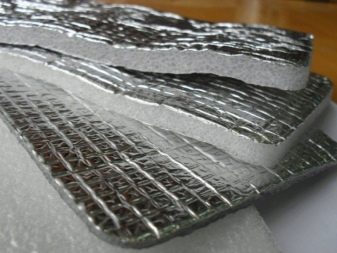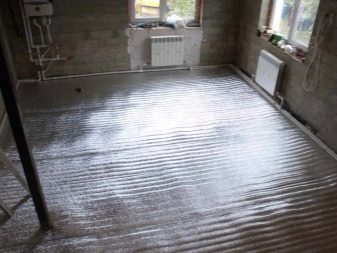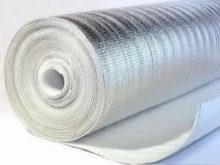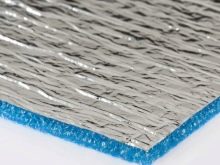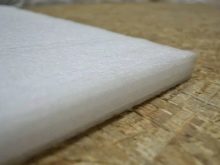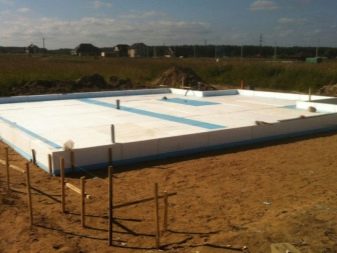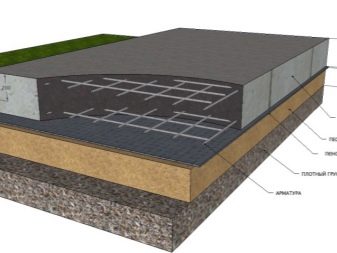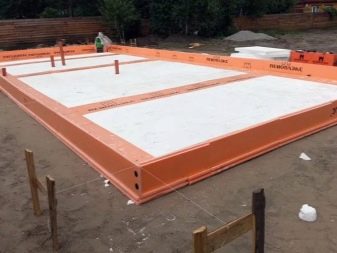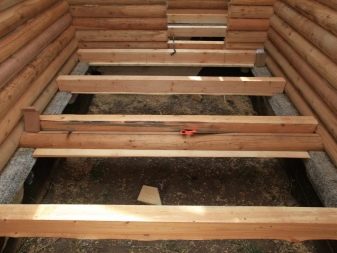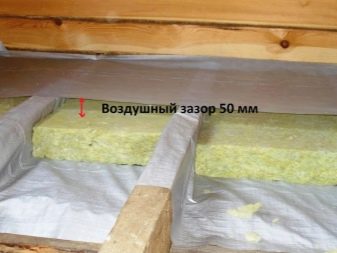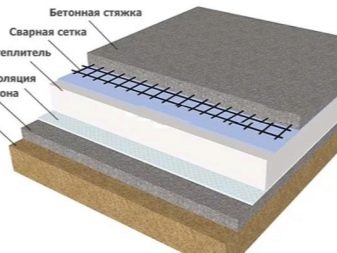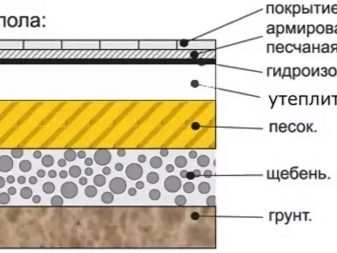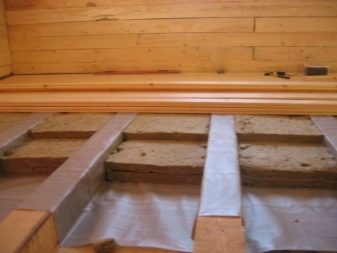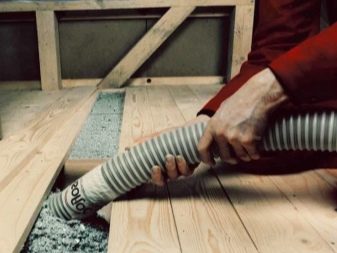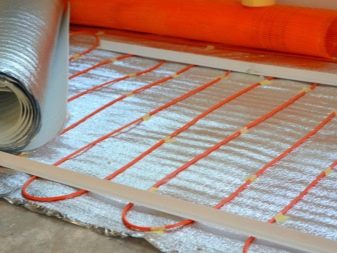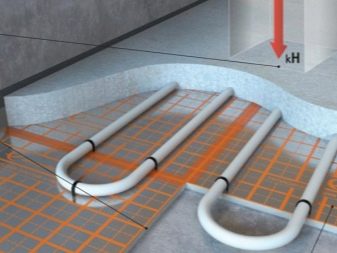How to choose the right insulation for the floor?
When arranging a comfortable home, it is very important to create an effective thermal insulation that “blocks” all the areas through which cold air can penetrate into the living space.
That is why the insulation of the floor is of particular importance, since the proximity to the ground and the insufficient thickness of the floors significantly reduce the level of heat of the coating. At the same time, an increase in the cost of heating or carpet does not change the situation, and therefore the owners of private houses are increasingly wondering what is the best way to warm the floor.
Special features
To maintain a comfortable microclimate and create favorable conditions for human living, it is important that the temperature in the room is the same throughout its volume. And if you recall a school course in physics, it will become obvious that warm air masses rise up, and cold areas form around the floor.Sometimes the difference between the upper and lower zones of the room is quite significant and it absolutely does not depend on whether the floor is equipped on the slab or it is installed on the ground.
Many believe that floor insulation should be dealt with last, because warm air, rising up, can leave a residential house, which means, first of all, it is necessary to isolate the roof. However, this is a very common misconception because according to professional experts, it is through the bottom of the house that it can leave up to 27% of the heat.
By the way, there is some side confirmation - with the construction of industrial refrigeration units, the lack of effective thermal insulation of the floor leads to an increase in electricity costs, their increase reaches 25-30%! In other words, it doesn’t matter at all whether the temperature in the room will be above zero or below zero, it will not be possible to stabilize energy costs without floor heating equipment.
In premises intended for permanent residence, the savings in the cost of maintaining a home should be closely related to maintaining an adequate level of comfort, so you should use heat-insulating materials with the most effective characteristics.
To modern heaters are subject to the most stringent requirements:
- Strength - The material must be strong and durable, it must freely withstand the pressure of all elements of the heating system (filled with water pipes), as well as finishing materials, screeds, furniture and people constantly moving around the house.
- Heat resistance - thermal insulation coating should keep its dimensions unchanged in conditions of any temperature fluctuations, this means that when you turn on the heating or heating elements, the length and thickness of the insulation should not change.
- Resistance to external aggressive factors - insulation must maintain its integrity and high performance characteristics under the influence of acid-base solutions, and in addition, must withstand contact with all types of building materials.
- Low thermal conductivity - the coefficient of thermal conductivity has a direct to the level of heating the room - the lower it is, the less opportunity for warm air to "get out", and the cold air, on the contrary, to penetrate through cold bridges.
- Hygroscopicity - the material should not absorb moisture and break down when wet.
- Fire resistance - thermal insulation should be resistant to burning, it should not ignite and maintain a flame, in addition, the coating fibers should not smoke and emit harmful products of combustion into the air.
- Vapor permeability - the coating must pass steam and anti
- Environmental friendliness - the coating should not emit harmful and toxic substances.
- No deformations - throughout the entire period of use, the insulation must maintain the original appearance and dimensions.
- Durability - The material must retain its physical and technical characteristics for a long period of time.
- Biostability - insulation should be an environment in which rodents do not live, does not appear mold and does not reproduce fungi.
Scope of application
For insulation of the floor it is allowed to use any heaters, however, the scope of each of them is significantly limited by the technical and physical features of materials of different types. The most versatile option is considered hydrophobic mineral wool or extruded polystyrene foam.
A good option can be called bulk expanded clay,However, its use will lead to a significant increase in pressure on the supports, so its use is justified only in new houses or in buildings with an additionally reinforced foundation. In addition, claydite significantly increases the line of the floor and, accordingly, reduces the height of the ceilings, it must be borne in mind, especially if the work is carried out where the height of the rooms is small.
If installation takes place on a wooden base, the main requirement for materials is their vapor permeability, otherwise the natural ability of wood to “breathe” will be minimized. That is why the use of extruded polystyrene foam is not allowed here.
The use of vapor-permeable foam and foam in the form of balls is also undesirable because it will attract rodents, who are happy to build their burrows in a warm and dry material. Bugs will not stand aside, which can significantly spoil the quality of wood.
For rooms located on the ground floor, it is worth giving preference to such heaters, which additionally have the property to absorb external sounds.Underfloor heating systems require foil coverings, isofol or foil mats are most often used here.
In situations where homeowners do not consider it necessary to dismantle the floor, insulation is carried out from the basement and basement - in this case, bulk materials are not suitable, you should give preference to rolled or slab heaters.
Kinds
To reduce the level of heat loss in the premises, as a rule, use two main methods of thermal insulation:
- reflection of thermal radiation - involves the use of coatings with a metallized layer, which reflects heat rays and thus reduces the severity of heat loss;
- heat exchange prevention - based on the use of heat insulators with low thermal conductivity, as a result, the coating does not release warm air to the outside and does not conduct cold air masses inside.
To understand the features of modern insulation materials, their advantages and disadvantages, let us dwell on the most popular of them.
Organic
Organic insulation for the floor in its structure contain natural ingredients, as well as substances of synthetic origin and cement.Raw materials treated with polymer additives, acquires the highest thermal insulation properties, and also becomes resistant to fire and high humidity. Modern manufacturers offer a wide selection of organic insulation.
Wood concrete - material in the form of extruded blocks, which are made of chipboard, as well as sawdust, chopped reeds and straw. To give strength to the coating, cement, calcium chloride and liquid glass are introduced into its composition. The thickness of such blocks can vary in the range from 1 to 10 cm. The material is characterized by high tensile strength, plasticity and very low thermal conductivity, which does not exceed 0.10 W / m * K.
Polyvinyl chloride is the so-called PPVH-plate, consisting of materials based on organic resins. A distinctive feature of such a coating is almost zero thermal conductivity, as well as exceptional bending strength and cold resistance. This type of insulation is most in demand in the arrangement of the subfloor, as well as in roofing and facade works.
Chipboard - chipboard, is a derivative of wood,therefore, it is distinguished by high environmental friendliness and durability, and the introduction of special fungicides and flame retardants into the structure makes the material more dense, resistant to fire, and also biologically resistant. DSP allows you to maintain the required temperature in the room, but at the same time allows air to circulate and form a healthy microclimate.
Polyurethane foam - the basic raw material for the production of polyurethane foam is polyester with the addition of special emulsifiers and synthetic additives, which give the coating heat-reflecting properties. This material has a minimum thermal conductivity due to the minimum density. During spraying, the composition forms a cellular structure, which determines the highest insulating characteristics of the coating.
At the moment of solidification, PPU forms a smooth, seamless surface, which completely eliminates the appearance of “cold bridges”. This coating has a good hygroscopicity, so the use of polyurethane foam allows you to skip the step of laying a waterproofing coating - the material combines in itself its functions 2 in 1.This composition has found its application in the work on the arrangement of the subfloor from plywood or under the cement screed.
Penoizol produced in the form of granules or blocks. The main component in the structure of insulation is urea-formaldehyde resins, mixed with glycerin, while insulation is characterized by plasticity and flammability. Penoizol is used for warming walls and floor coverings of all types.
Strangely enough, but polystyrene-based petroleum products for 95% consists of air, because the material has a cellular structure, due to which the efficiency of the heating system is increased by 30-40%. The material is resistant to corrosion, and also withstands moisture and steam. Expanded polystyrene is considered a more modern version of polystyrene, it has a higher density (40kg / m3 instead of 10 kg / m3), is homogeneous, almost does not absorb moisture, has a low weight and extremely low thermal conductivity. Such plates do not shrink and perfectly absorb noise, therefore they are very popular when arranging wooden and concrete floors.
Penoplex is foamed foam,The special structure of which is achieved by introducing into the composition of the active components of special substances, which, under conditions of high temperature and technical heating, begin to decompose and liberate gas. This process occurs under conditions of high pressure, so the cavities are formed small and closed. This structure causes high heat insulating properties of the penoplex: poor vapor permeability, low thermal conductivity, strength and durability.
This is a unique material, which in some cases can even be used to create structural elements, for example, to create interior partitions.
Most importantly, penoplex does not absorb water at all, so it can be used as a cement screed without prior waterproofing of the surface. Polyethylene foam is obtained by synthesizing simple polyethylene with a hydrocarbon. The resulting material not only retains heat well in the room, but also has a high vapor barrier, and in addition, reliably absorbs noise and other sounds.
Ecowool is a thermal insulation material based on cellulose fibers,treated with special additives that give the coating antimicrobial and flame retardant characteristics. Ecowool is distinguished by low cost, but at the same time its performance characteristics are extremely high: its thermal insulation is 4 times higher than that for expanded clay, it is characterized by immunity to pathogenic microorganisms and settlements of rodents. However, there are also disadvantages of eco-wool - it absorbs water, so its installation requires mandatory two-sided waterproofing.
Slag is essentially an empty rock, it is formed as a by-product of metallurgical production, so it can be safely attributed to natural materials, because it has a natural origin.
The material has a relatively low cost, however, its performance characteristics leave much to be desired: the thermal conductivity is quite high, and the heat transfer coefficient approaches 0.4W, therefore, even in comparison with expanded clay, this insulation is twice as high to ensure the required level of insulation. That is why this type of materials is used for arranging the floor on the ground, most often in summer cottages and summer houses.
Expanded clay is a natural material, so its main advantage is high environmental friendliness. It is made from clay and can be used both in the dry version and as an additive to the concrete solution. Like any clay products, claydite is absolutely not afraid of fire, but absorbs moisture, so when using this insulation double waterproofing is required on the outside and inside of the heat-shielding layer.
The advantages of expanded clay are obvious: it is a wear-resistant material with high strength, so it is often used under the screed. In addition, it is practically the only insulation that allows you to create an effective thermal protection of houses on the ground, however, in this case, a pillow of sand and rubble should be arranged under it.
Some home craftsmen use sawdust in their original form - bulk. The only advantages of such heat insulation are low price and high environmental safety. However, the number of minuses is much more - under the influence of moisture, sawdust rot quickly, they are a good breeding ground for rodents and pathogens, and moreover,have a very short service life.
Nowadays, homeowners almost everywhere have abandoned the use of sawdust.
Inorganic
The use of inorganic insulation allows you to achieve the lowest degree of heat exchange of the room with the external environment. These are materials that are made from synthetic components, they are not afraid of temperature fluctuations, so they are widely used for insulation of the basement. As a rule, asbestos, fiberglass, slags, plasticizers and mountain mineral rocks are included in the composition of the components.
Mineral wool in the form of rolled material is in the greatest demand. This insulation is made from waste processing of non-ferrous and ferrous metals, while the main binder component is phenol, thanks to which coatings and acquire low thermal conductivity, vapor permeability, as well as good noise insulation. At the same time, mineral wool practically does not burn and can serve as a faith and true for several decades.
Glass wool is a material derived from glass waste. This material is quite noticeable thickness, which often reaches 6-8 cm,The coating is neutral from the point of view of chemical activity, resistant to temperature extremes and exposure to ultraviolet radiation. This material has an affordable price. But there is one “but” - in residential premises, glass wool-based heat insulators are absolutely not recommended.
The microscopic needles they emit may harm the human respiratory system and injure the skin, so today glass wool is practically not used in private housing construction.
Foil
In recent years, when arranging warm floors, they increasingly resort to the use of foiled thermal insulators, since such coatings not only retain heat in the house, but additionally protect premises from the ingress of excess sounds, as well as save from moisture. Such materials consist of 2-3 layers, and one of them necessarily consists of aluminum foil.
The overall thickness usually ranges from 4 to 10 cm, the width depends on the specific modification and manufacturer.
The most popular foil insulation materials are:
- Izolon - made of gas-foam polyethylene, covered with a layer of foil. Separate modifications of the isolon have a third adhesive layer, which greatly simplifies the procedure for laying the material on the surface. The advantages of izolona also include low weight, due to which it is widely used in arranging effective thermal insulation of the ceiling and floor.
- Penofol- it is a material consisting of foil and polyethylene foam, this coating is capable of reflecting up to 97% of thermal radiation, and besides, it exhibits exceptionally high waterproofing properties, therefore it is widely used in rooms with high humidity levels (baths and pools).
- Polyethylene foam - A good heat-insulating material, which is optimal for wooden and concrete bases, has high thermal characteristics, and in addition, reliably absorbs excess noise and external sounds. This material is characterized by good biostability and chemical neutrality. The coating structure is cellular, so it is lightweight and quite easy to attach to the base.
It is not subject to rotting, therefore it can be used in regions with the most severe climate.
Device
The floor is insulated in several ways.
External basement insulation
Most experts agree that the foundation can and even needs to be warmed, since in winter, when the ground freezes, the heat loss significantly increases, and this, in fact, leads to an increase in heating costs. Such a situation should be corrected, so the thermal insulation of the foundation must be given the closest attention.
It is better to use expanded polystyrene plates as the main material, since they are resistant to temperature fluctuations and withstand even the most extreme temperature conditions, and in addition, the foam retains its physical and technical features when exposed to soil moisture and groundwater.
Plates are placed outside the building around the perimeter of the entire foundation, fixing is carried out using cold-resistant glue or dowels. Optimally, if the insulation will be located slightly below the level of soil freezing.
Upon completion of their work, they should be revetted with decorative materials, preferably with frost-resistant plaster.
Internal work on weatherization
Much attention should be paid to the internal work on the insulation of the room.
As is known, wood has a rather low thermal conductivity, but the wall thickness is usually not enough to completely eliminate the cold, and besides, over time, cracks may form in the boards, which lead to a draft. That is why wooden floors must be insulated.
To do this, wooden logs are attached along the entire length of the floor, plywood trimming is attached to their lower part at the junction points, which become the basis for the insulation layer. Most often for a wooden floor use mineral wool, expanded polystyrene or penofol. These materials tightly fasten between the timber, the thickness of the insulation layer depends on the characteristics of the room, for example, rooms on the first floor require a more dense layer than the floor on the second floor and above.
At the final stage, the insulation is covered with a film to provide vapor barrier, and then boards are laid on top. Most modern buildings have a base of concrete, which is quite difficult to imagine without multilayer insulation.
Usually,Such works require a material that is rather durable and resistant to high loads. Deciding which of them to give preference, consider the various options.
On the ground
Such technology, as a rule, is used for arranging flooring in baths and small private wooden houses. In the process of installing the coating, you must observe the following sequence of actions:
- soil should be cleared and leveled;
- a layer of rubble and sand is laid on the ground as a substrate;
- waterproofing is installed if necessary; roofing material is most often used;
- insulation and vapor barrier material;
- the coating is poured with cement, after which the finishing is done.
By lag
This is a fairly effective method, however, it costs much more than the previous one. What you need for this:
- The soil is leveled and compacted.
- Along the entire perimeter are stacked brick columns, which will serve as the basis for wooden logs. Step should be 50-60 cm.
- The masonry bars are fixed and spread out waterproofing coating.
- Insulation (claydite, mineral wool, etc.) is fallen asleep between the lags, after which the vapor insulator is attached.
- At the finishing stage, cement screed is carried out to further decorative finish the coating.
How to choose?
For thermal insulation of a wooden coating, porous materials that do not hold the shape, as well as any loose types of insulation will be optimal. They can be freely filled into the space between the installed lags, while it is important that the coating does not interfere with the free circulation of air.
For a concrete base, solid materials are optimal that keep their shape perfectly and are not deformed under increased load. This is very important because a screed is poured over the insulation in such systems, which places a heavy strain on insulating materials.
When working on concrete, it is not necessary that the coating “breathes”; its hygroscopicity, that is, immunity to ground moisture, is considered to be of principle.
Under the self-leveling floor slabs are also used.
For the system of arrangement of “warm floors”, the same coatings are suitable as in the case of concrete, but they must necessarily contain foil film, which directly reflects the heat coming from the structure.
Tips
One of the most modern trends in solving the issue of thermal insulation of the house has become the installation of the "warm floor" system. Nowadays, manufacturers have brought to the market three main options for floor heating - water, infrared and cable. The water method is used for large areas. This technique involves the circulation of hot water through pipes mounted in the floor. Such a system has a number of limitations:
- it cannot be used in multi-storey buildings, since it creates additional pressure on the floor;
- in the event of a breakthrough, there is a risk of “flooding” the neighbors from below, which will lead to large expenses for troubleshooting;
- high cost of materials, as well as installation work.
The infrared floor is a polymer film, which is divided into identical squares, each of which is equipped with special plates that are responsible for high-quality heating.
Such a system is better to install under the laminate or linoleum. If you use it under the tile, it quickly connects to the glue solution.
Cable is an electric floor that can function year-round.In order to reduce the cost of electricity, special thermostats are built into the design. The construction itself is assembled from two- or three-core cables or electric mats.
This method is the best under the tile, because it contributes to its rapid heating and heat retention.
The technology of "floating floor" is very popular, for it use Isover coating.
Video instructions on floor warming through logs, see below.
